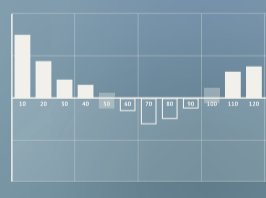11.21.2025
Sausage casings bulletin, November 21, 2025

...

Can you count the moving targets in play today in this Biodiesel market? EMTS data, HOBO, D4 or D5, argie bio and sugar cane etoh arbs, BTC or PTC the ways in which just the remainder of CAL 15 might play out is nothing short of dizzying. Sure the June EMTS number for D4 generation was HUGE, but this was largely anticipated by most given the June B15 generation numbers were a product of May production largely when everyone was throttling every drop of production blissfully hoping for the double down play of a RIN spike and a BTC event.
So although the EPA’s 2015 proposed RVO target appears reasonably achievable today, there is a lot of factors that could play out across the second half of the year that can significantly impact what has happened year to date. At a minimum what we have seen thus far in the market is that the present SnD balance is not something to rush into frantically buying RIN as we have witnessed take place in past pivot points such as this, exploding into RIN spikes. Instead we see a rather tentative market that has ensued which of late just seems to plod further and further towards a structure that does not appears to work far anyone. ‘Ah the good ole days’ as one trader lamented to me recently, when RIN spikes would rival the likely EKG results of the larger Obligated Party’s compliance departments and traders at the Petroleum trade groups who are forced to comply with this pesky EPA program. Still the moving targets that are present, but not yet crystal clear as to how they will play out, will tell the story in the end, painting the picture in arrears as EPA EMTS , EIA and import dates crystallizes how the EPA’s 1.7 Billion gallons target and perhaps as important the D5 target gets met. Thus it appears a bit more patience will be required of the biodiesel, renewable diesel, at this point let’s call it the D4 generator market as the overflow pocket that is the D5 plays out a touch further answering the million dollar question of how many D4’s does this market need?
Listen folks June was a big number, bit of a bomb really and for the apparent many-happy-to-still-run in these conditions with razor thin economics for most of the year, they now sit firmly planted in a below variable cost environment given the present market structure. HOBO is hideous and many of the feeling likely to get worse. This of course compared to a year back when, although there was no tax credit in play the spread supported a solid $1/gal better economics then where it supports production economics today. And again the prevailing thinking, that is to say those high paid analysts who predict the future of commodities with some sort of crystal ball will say that energy is likely to suffer ahead of agriculture as it looks today, tomorrow who knows. Now sure the D4 June number was big but then again the D5 is thin and perhaps presents the opportunity for the D4 that is ramping towards numbers that require an overflow to absorb it. Whether or not this happens however is entirely dependent on the good ole D6 RIN really. Now given the softer D6 RVO on May 29th that resulted in the immediate retreat and now significant 30 cent differential between the D6 and D4/5 values versus the RIN complex that had traded since early 2013 was again promptly broken apart, much to the pleasure of the voracious RIN spread traders in the market. In doing so though the EPA opened the door to an arbitrage not seen for a few years since the pre RIN wolfpack or complex emerged. Wide disparity in the early years of the RFS2 program between D4 and D5 values created a few moments in which significant waves of US Corn ethanol would be loaded onto vessels retiring a cheaper D6 RIN while large boats of Brazilian sugar cane ethanol were loaded and shipped up to the US to be imported and in turn generate a higher value D5 RIN, effectively creating a reverse arbitrage out of the EPA’s RFS2 program. Now I know many will feel this a rather inefficient, certainly counter-productive result for a government program set to curb GHG emissions when you think of all the bunker fuels being burned through the beautiful Caribbean, but such is the case of the infancy years of a program struggling to find its groove.
Getting back to my point, the EPA’s May 29 guidance has arguably created a rather large opportunity for this arguably counterproductive GHG event, as I will call it reverse arbitrage dynamic to re-emerge. Just how many D5 RINs will be generated out of this becomes a big question in how both D5 and D4 values will play out for this year and perhaps even the coming years. Will the corn industry rally to increase ethanol’s take in the RVO for a larger final number that restores the wolfpack, RIN complex? Will additional volumes be tacked on to other categories as the D4 generating market clearly has not received the support it needs to operate profitably or will it simply have to hope and pray for the IRS’ support to come through via a tax credit. Lot’s of moving pieces, with lot’s of twist and turns likely to come.